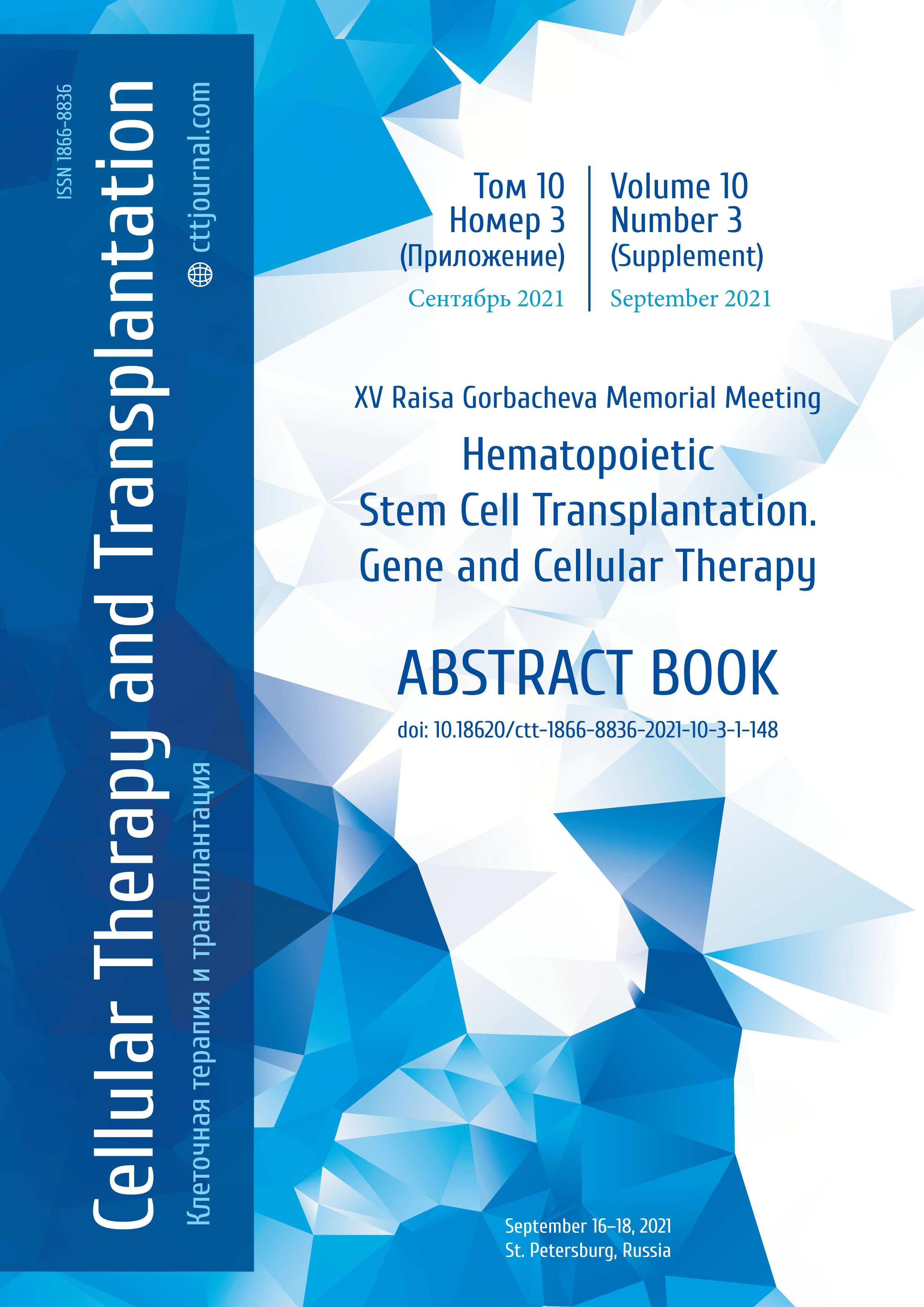LY-03. Treatment of mantle cell lymphoma: experience of the RM Gorbacheva Research Institute
Polina V. Kotselyabina, Liudmila V. Fedorova, Kirill V. Lepik, Elena V. Kondakova, Yuri R. Zalyalov, Evgenia S. Borzenkova, Nikita P. Volkov, Ivan S. Moiseev, Natalia B. Mikhailova, Alexander D. Kulagin
RM Gorbacheva Research Institute, Pavlov University, St. Petersburg, Russia
Correspondence:
Dr. Kirill V. Lepik, e-mail: lepikkv@gmail.com
Summary
Mantle cell lymphoma (MCL) is an aggressive B-cell lymphoma accounting for about 6% of non-Hodgkin’s lymphomas which has a historically poor prognosis. First line high-dose chemotherapy (HDT) followed by autologous hematopoietic stem cell transplantation (auto-HSCT) and maintenance rituximab therapy improve treatment outcomes in young patients. However, the prognosis of patients with refractory and relapse (r / r) MCL remains poor. Therefore, the issue of optimal treatment approach for r/r MCL is extremely relevant. The aim of this study is to assess the results of therapy for patients with MCL at the RM Gorbacheva Research Institute, Pavlov University.
Patients and methods
A retrospective single-center study included 92 patients (57 m and 35 f) with a histologically confirmed diagnosis of MCL (Table 1). The primary endpoint was the overall survival (OS) of patients with MCL defined as the time from initiation of 1-line therapy to death from any cause. The secondary endpoint was progression-free survival (PFS) – the time from initiation of first-line therapy to disease progression, relapse, or death from any cause; PFS was censored by the date of next line of therapy. In assessing survival data were censored according to the date of last contact for patients who did not develop an event at the time of follow-up. OS and PFS were estimated using Kaplan-Meier method with 95% CI estimates.
Results
All patients (n=92) were included into therapy efficacy analysis. The median age of the patients is 60 (28-81). Among morphological subtypes, the classical variant was found in 65% (n=60), blastoid – in 16% (n=15), pleomorphic – in 7% (n=6), unspecified – in 5% (n=5). Stage II at the time of diagnosis – in 3% (n=3), III – in 17% (n=16), IV – in 79% (n=72). In 66% (n=61) of patients, the expression of Ki67 was assessed: in 11% (n=10) of cases it was at a level of <10%, in 24% (n=22), the expression was 10-29%, and in 31% (n=29), the Ki67 expression values were >30%. First-line therapy was as follows: CHOP-like regimens in 41% (n=38), regimens with high-dose cytarabine in 37% (n=34), R-BAC in 3% (n=3), RB in 4% (n=4), and other regimens in 14% of cases (n=13). Auto-HSCT as the first-line therapy was performed in 24% (n=22) of cases, as subsequent lines, in 9% (n=8). Maintenance therapy with rituximab was administered in 48% (n=44) of cases. Ibrutinib in any line of therapy was received by 22% (n=20) of the patients with the following responses: CR 40% (n=8), PR 20% (n=49), SD 20% (n=2). Bortezomib in any line of therapy was administered in 14 patients (15%), with the following responses: CR, 36% (n=5); PR, 35% (n=5); SD, 14% (n=2); PD, 7% (n=1). Lenalidomide as any line of therapy was received by 9% (n=8) with the following responses: CR, 25% (n=2); PR, 13% (n=1); SD, 13% (n=1); PD, 50% (n=4). Allo-HSCT was performed in 8% (n=7) patients. The median follow-up from initiation of first line therapy was 26 months (1-160). Two-year OS for the whole group was 91.4%. OS values for the patients who underwent auto-HSCT as first line, subsequent lines, or didn’t undergo was 86.4%, 75% and 71% (86.4%, and 71%, p=0.032), respectively. OS of patients subjected to maintenance therapy with rituximab after first line of therapy and without it was 81.8% and 68.8%, respectively (p=0.039). Two-year PFS for the entire study group was 87.2%.
Conclusions
Treatment outcomes in first line auto-HSCT patients are superior to other treatment strategies, while maintenance therapy with rituximab significantly improves OS. With r/r MCL, the use of new targeted drugs is effective, but allo-HSCT remains a curative method.
Keywords
Mantle cell lymphoma, auto-HSCT, rituximab.
Table 1. Characteristics of MCL patients under study




